New Creation exists to propagate the real work of creation scientists using a Genesis paradigm to develop testable scientific hypotheses and construct models. We believe this approach could provide the best overall explanation of the scientific data. But in doing so, we also need to acknowledge parts of our models that remain incomplete. Unsolved mysteries are wound into the very fibers of the scientific process. This is literally why we science! So why wouldn’t we expect the same level of unsolved mysteries to exist within science, even from a creationist paradigm? Unknowns should neither scare nor discourage us—they should excite and motivate us! Unknowns are an integral part of the scientific process. They challenge our research and push us closer in the right direction.
The following article is a summary of “The Clay Consolidation Problem and Its Implications for Flood Geology Models,” by Scott Dunn, and of the surrounding discussion and research pertaining to it. The views expressed do not necessarily reflect those of New Creation.
In his paper, published in the Creation Research Society Quarterly, Scott Dunn expresses concern about the lack of attention creationists have given to processes of lithification in sediments. This is the Clay Consolidation Problem or, as I like to call it, the “Mystery of the Flood Mudrocks.”
Dunn is a Christian civil engineer with a doctorate in wave modeling and sedimentation. While Dunn does not hold a degree in geology, the work of civil engineers requires many of the same knowledge sets. Among his areas of research interest are the liquefaction of sediments under wave/tsunami loading and the post-depositional consolidation of sediments. These areas of research and expertise qualify Dunn to address this unknown within creationist Flood geology models.
What is the Mystery of the Flood Mudrocks?
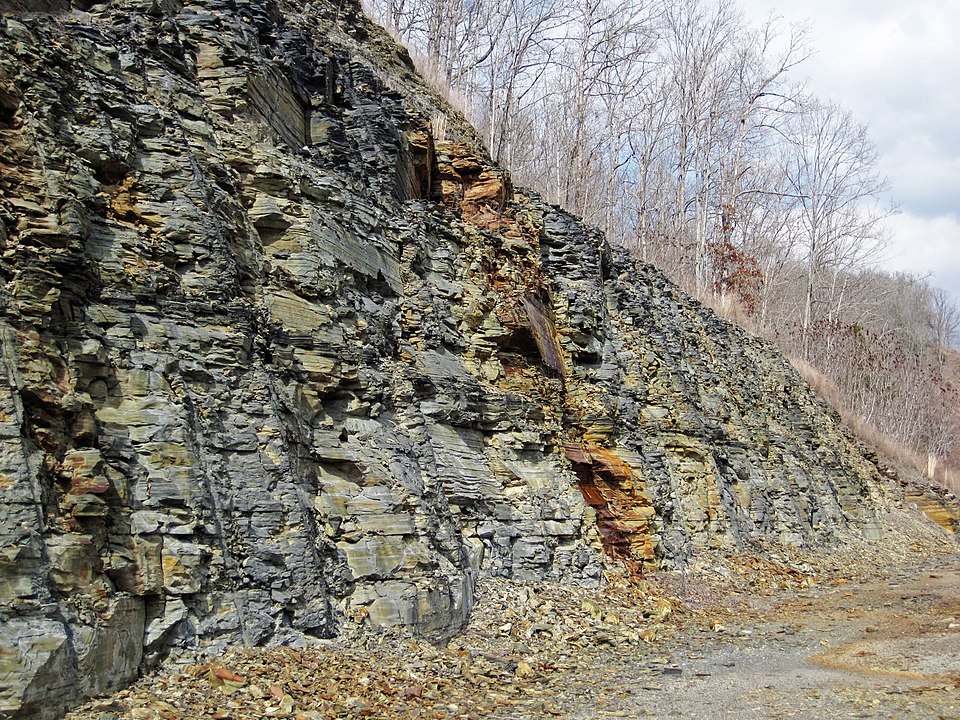
Mudrocks are a type of sedimentary rock which forms from tiny particles of pre-existing rocks. They come in many different forms. Claystone and siltstone are both types of mudrock, made of clay or silt (respectively), that hardened into rock. Mudrocks have very low porosity, which means they have very few internal voids with the ability to contain liquids. The sediment particles making up mudrocks are so tiny that they form a nice, water-tight seal.
Mudrock layers blanket our continents in thick packages. There is decades-worth of literature published by young-earth geologists theorizing how thick layers of soppy, wet mud may have formed during the Flood and its aftermath. But what happened to these layers next? After all, today we see they no longer consist of soppy mud—at some point, they hardened into solid rock. How did layers of soft mud turn into solid rock? What processes were involved?
Today, there are more professional young-earth geologists than at any other time in history. (What a time to be alive!) Most of them study either “deposition”, what happens before sediment becomes sedimentary rock, or “weathering” and “erosion”, what happens after sedimentary rock is formed. This makes understanding the crucial middle step—how sedimentary rock actually forms—a challenge. For this reason that Dunn felt led to pursue research in what this crucial middle step might involve.
The State of Mud During the Flood
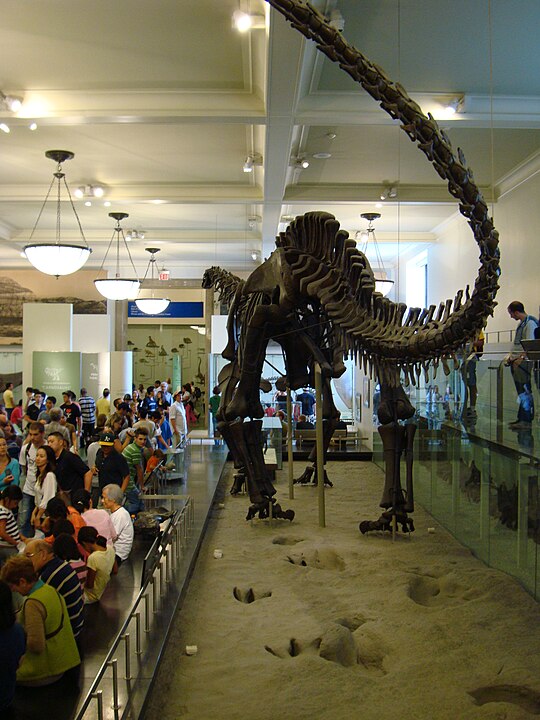
Most Flood models postulate that the majority of rock layers formed during the year-long global Flood of Noah’s day. There are fossils in these rocks, many of them being footprints and trackways. Many young-earth paleontologists believe dinosaurs formed these footprints by walking across briefly-exposed, freshly-lain sediments. This requires deposited sediment to have sufficient strength to support the weight of the animal.
Elephants produce an average pressure of about 250 kPa underfoot.1,2 If the elephant walks on clay, that clay must be able to support its weight. Specifically, this must be moderate-strength clay. Obviously, there were dinosaurs smaller and larger than an elephant leaving their footprints in the mud. If we understand this correctly, it necessitates that walking surfaces during the Flood had developed a degree of strength to support even large dinosaurs within a time frame of hours or days after forming.
We know there are other time-relevant factors, such as sand injectites, that indicate the duration required for the sediments to have hardened, at least to some degree, long before the Flood ended.
“It’s Hardening Time!”3
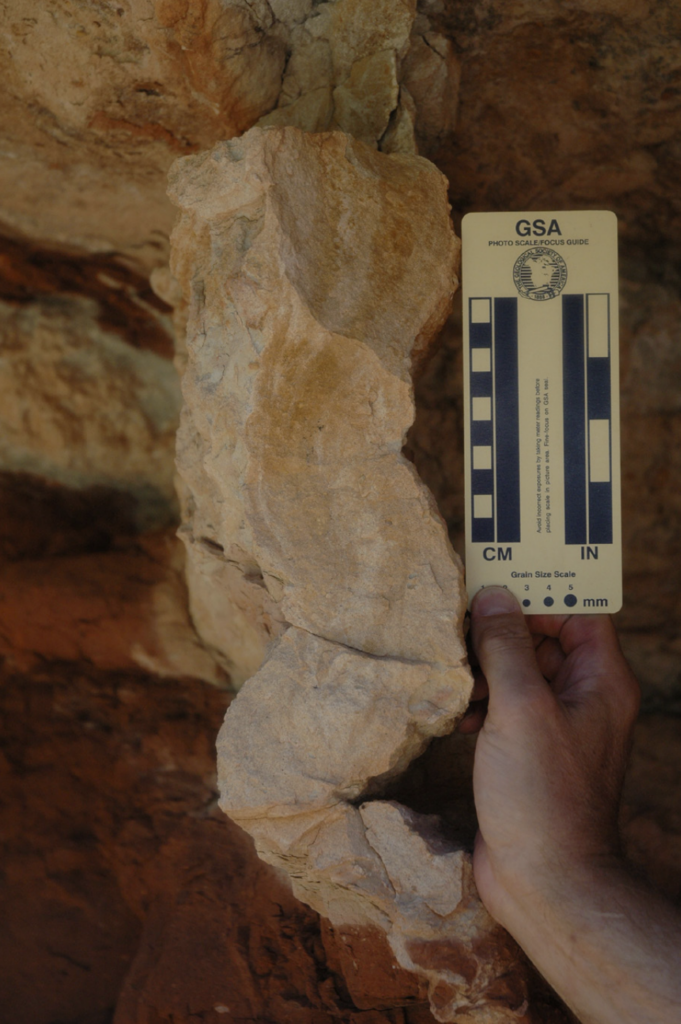
Sand injectites are visible in the walls of the Grand Canyon. There, a layer called the Coconino Sandstone rests atop the Hermit Formation, a substantial bed of mudrock. Whitmore and Strom note that there are extensive wedge-shaped cracks in the Hermit Formation. These cracks are filled with sand spilled down from the Coconino Sandstone above.4 The largest of these sand injectites reaches the depth of 15 meters and measures 0.25 meters wide. These injectites formed when liquified sand was injected into underlying sedimentary layers. Whitmore and Strom think that earthquake activity is responsible for this particular instance of the injectite phenomenon.
There are small chunks of the Hermit Formation within the sand-filled cracks. This suggests the Hermit had partially solidified before the time of injection. However, for the sand injectites to have formed the way we see them today, both the Coconino and a significant portion of the Hermit would have had to retain a degree of fluidity, without completely solidifying. This condition imposes constraints on the timeframe between the formation of the Hermit and Coconino layers and the earthquake events that created the sand injectites. If too much time had passed, these sedimentary layers would have dewatered and solidified. As a result, the sand injectites would not have been able to form.
This temporal constraint poses a challenge to the old-earth timescale. Secular geologists can’t affirm solid dates to either formation because of their rock types. However, they do project that they both formed during the early Permian period, approximately 298 to 270 million years ago.5 The sand injectites also formed during earthquake activity, which presents another challenge for the secular explanation. This region did experience seismic activity during the late Miocene/early Pliocene epochs (about five million years ago). But that happened hundreds of millions of years after the projected dates for the Hermit and Coconino. 265 million years is a long time for both layers to remain water-saturated and (perhaps partially) unconsolidated!
Fast-Forming Rocks Today
In order to explain how rocks might have formed over the short time frame required by the Flood narrative, creationists often point to examples of fast-forming rocks we see today. Paleontologist Kurt Wise summarized these examples during the International Conference on Creationism in 1986. Wise noted that the geologic literature is full of examples of fast-forming rocks, such as beachrock and pyroclastic flow deposits.6 However, Dunn points out that these solutions do not actually resolve the Mystery of the Flood Mudrocks.
Beachrock
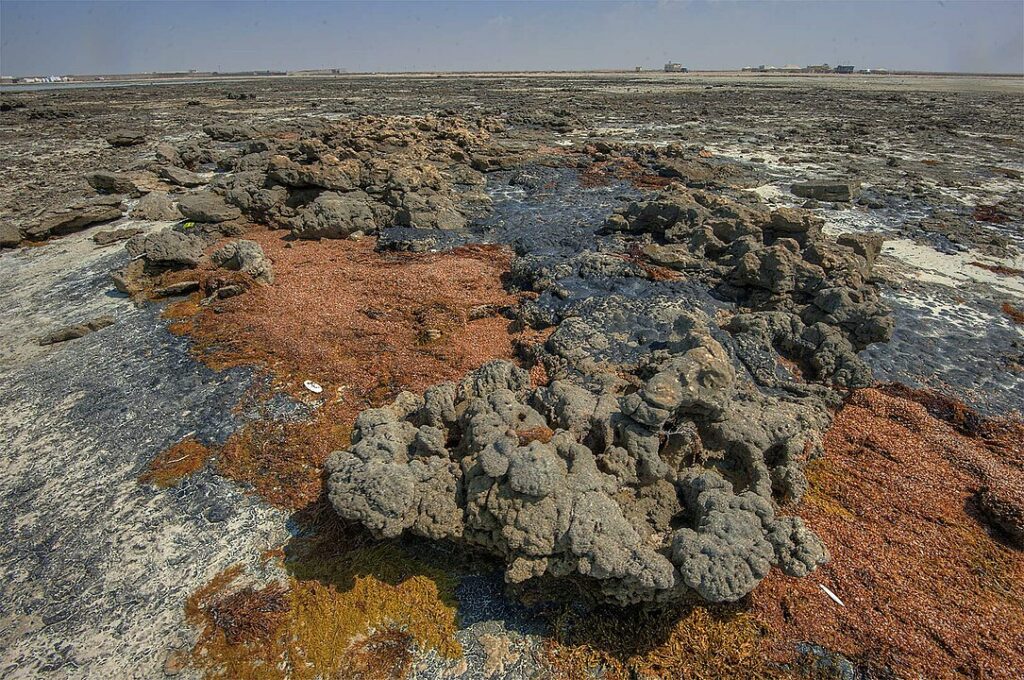
Carbonate rock can readily form on ocean bottoms, reefs, and beaches. One example, called beachrock, often contains “fossils” of modern objects. These show how recently the beachrock must have formed. Such “fossils” can include cannons,7 batteries,8 barbed wire,9 tin cans,10 beer bottles,11 and Coca-Cola bottles.12 These examples demonstrate that sediment can become hardened within a relatively short period of time.
Dunn cautions that what we currently know about beachrock formation is not a direct parallel for most mudrocks in the geologic record. This is because beachrock only occurs within certain environments. Such environments often consist of specific sediment grain sizes, wave climates, water temperatures, and are confined within a limited area of the intertidal zone of the beach.13
Pyroclastic Flow Deposits
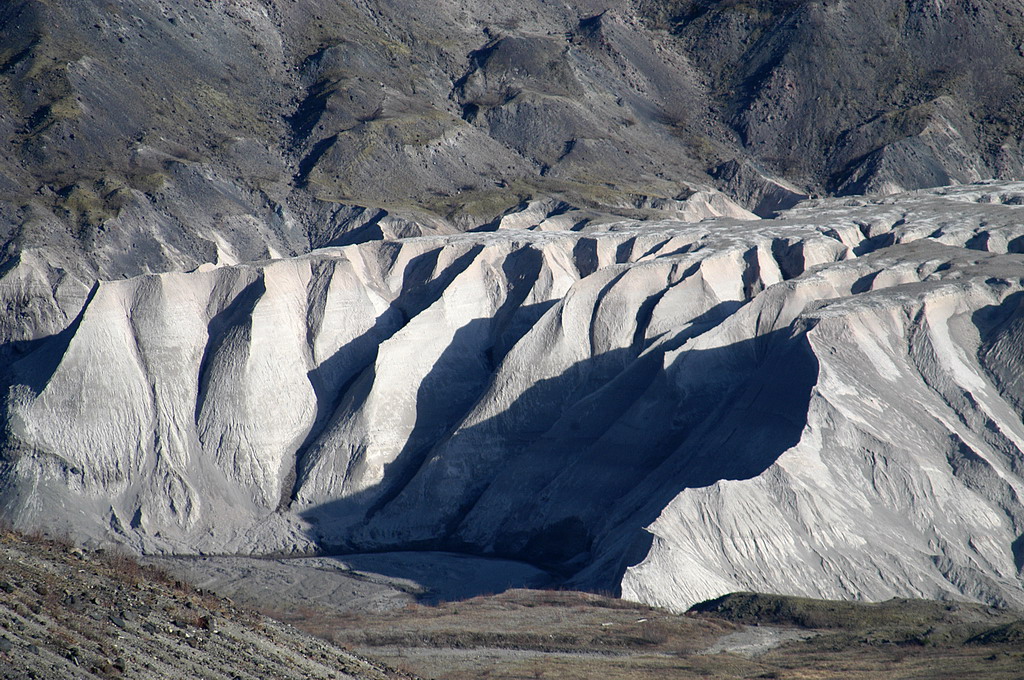
A pyroclastic flow is a fast-moving current of hot gas and volcanic matter that flows along the ground away from a volcano. When Mount St. Helen’s erupted in 1980, pyroclastic flow deposits formed, some measuring dozens of feet thick. They can also harden into rock very quickly. Dunn notes that pyroclastic flows formed under very dry conditions and at very high temperatures (over 572oF!). These do not seem to be the same conditions under which most mudrocks solidified.
What Do We Currently Know About Making Mudrocks?
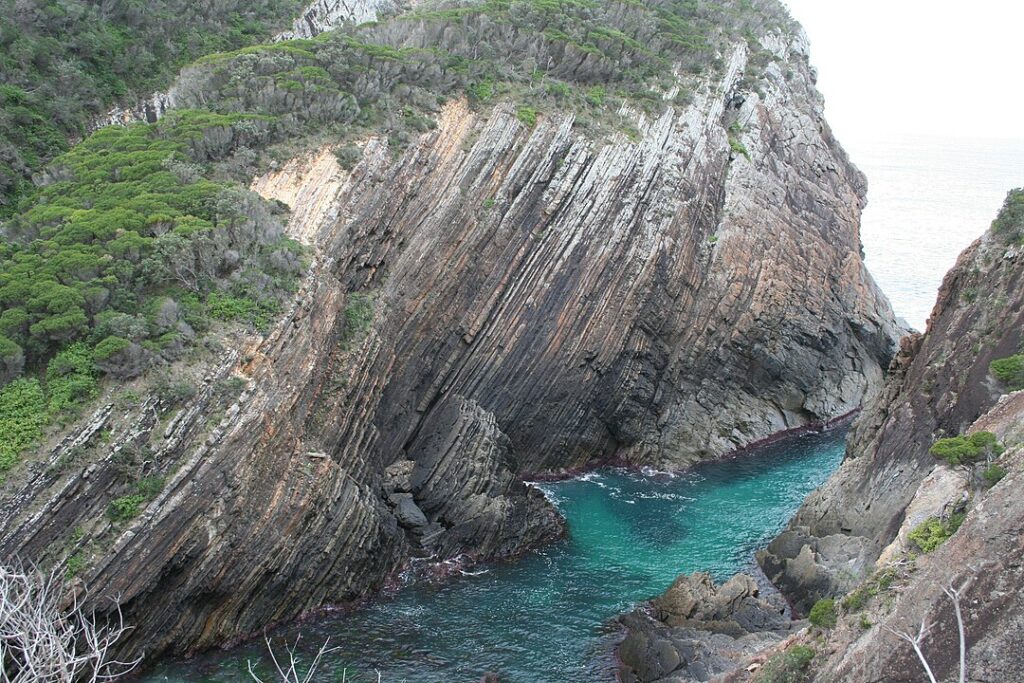
The modern-day process of how wet mud forms into mudrock has been an extensive area of research for over 100 years. When mud particles begin their descent to the water bottom, they form tiny clusters called floccules. The floccules accumulate in a fluid-like state. Eventually, the mud deposit loses its water and develops a consistency similar to toothpaste. This stage is called “gel point.” Its composition is 90% empty space, and only 10% mud particles.
Past gel point, the mud hardens and additional compaction decreases the thickness of the layer. For example, in order for 1.33 meters of claystone (a type of mudrock) to form, it requires a 10 meter-thick layer of freshly-lain soft clay.
Dunn notes the reason mud hardening has been such an intense area of research. Civil engineers need to know whether or not muddy areas are suitable for construction. They usually consider soft clay layers of about 5 to 10 meters in thickness unsuitable for building because of the amount of time it takes for the clay to become strong enough to hold such structures. This takes about ten years or more. To compensate, engineers use piled foundations or alternate drainage pathways (such as wick drains) to speed up the dewatering process.
The Mudrock Bias and Creationist Paradox
The only well-established soil mechanics equations available for model building with mudrock are based on the natural processes we see happening today. Those naturalistic calculations predict it would take one million years for clay thicknesses greater than 1,000 meters to reach a compacted state sufficient enough for lithification to begin.
Young-earth geologists recognize that geologic processes—of both catastrophic and supernatural origin—happened in the past that no longer occur today. Namely, these include the global Flood and its aftermath. As such, they must also recognize that processes occurring during those periods were often different from anything we can observe or simulate today. Ultimately, we understand God to be logical and to have intervened at various times in history. If creation researchers look, they should be able to find evidence of how this mudrock process may have occurred, even with the assistance of “supernatural” intervention. As such, creation researchers should not limit themselves to using only naturalistic methods to attempt explaining supernatural events.
The intriguing paradox lies in the fact that, short of time-travel, young-earth geologists remain reliant on present-day geological processes to analyze the rock record, even if we would consider those processes of the past “catastrophic” by today’s standards.14
Dunn’s Case Study: Drilling a Mudrock Deposit in the Labrador Sea

Dunn conducted a case study to understand dewatering rates of mud and its implications for young-earth geology as a whole. He used naturalistic dewatering rates on a mudrock deposit located in the Labrador Sea, just off the coast of Greenland. One goal of Dunn’s study was to test at what point mud deposits reached the moderate-strength necessary to support the weight of the animals who left behind the footprints and trackways we see fossilized today.
To research the mudrock deposit, Dunn used results obtained from the work of the Leg 105 campaign. In 1985, this research team drilled deep boreholes in the bottom of the Labrador Sea. One of these boreholes, Hole 646 B, descends some 3,500 meters below the seafloor. The upper 188.2 meters of what was drilled was composed mostly of silty clay. The lower rest consisted of claystone and siltstone, both a type of mudrock. When correlated with the geologic column, it corresponds to the upper Miocene to Holocene. On the old-earth timescale, this encompasses a period of time lasting about 10 million years. However, the young-earth timescale would place this deposit either during the latter half of the Flood or within the first few centuries after it. Dunn tested this research in the three following scenarios.
Dunn’s Scenario #1: Flood Deposit Hypothesis – 100 days
In this scenario, Dunn makes a few assumptions. First, he assumes that the flow of water escaping from the mud is moving upwards, since the underlying layers would have already hardened by this point. He also assumes that the layers are relatively horizontal, and that the horizontal flow of water is negligible. Accordingly, he proposes that the average rate at which the mud was laid down over a 100-day period would be 0.106 km/m3/s.

1 Year Elapsed
Practically no dewatering of the clay has occurred. The full 3,500 meters of mud remains in its originally deposited state. Its consistency is that of a thick slurry, unable to carry any weight. This would be like 3,500 meters of toothpaste. You can imagine the difficulty a dinosaur would have trying to walk across that!
100 Years Elapsed
1,200 of the 3,500 meters of mud has been dewatered, but it has almost no ability to support overlying weight. Essentially, the mud remains in a fluidized state.
10,000 Years Elapsed
Strength of the lower 100 meters has increased to that of low-strength clay, with settlement increasing to 1,800 meters of the total 3,500. This scenario, at 10,000 years, has yet to attain the moderate-strength needed to support animal weight.
Dunn’s Scenario #2: Post-Flood Deposit Hypothesis – 100 years
According to this scenario, the average rate at which Dunn proposes the clay is being deposited over a 100 year timespan is 24.6 kg/day/m2.
1 Year Elapsed
Similar to his Scenario 1, Dunn calculates that practically no dewatering of the clay has occurred. Virtually all 3,500 meters of mud remains in its originally deposited state. Its consistency is that of a thick slurry, unable to carry any weight.
100 Years Elapsed
Similar to Scenario 1, the 1,200 meters or so of clay has been dewatered. Nonetheless, it still has almost no ability to support overlying weight. Essentially, the clay is still in a fluidized state.
10,000 Years Elapsed
The strength of the clay after this span of time is still very soft within the top 1,000 meters. It only gains low-to-medium strength in the lowermost 100 meters. An animal attempting to walk across this would sink through 3,400 meters of slurry before possibly finding any stable footing.
Dunn’s Scenario #3: Slow Deposition Hypothesis – 9 Million Years
According to this scenario, the average rate at which the clay is being deposited over a nine million year timespan is 80 meters per million years. Within this duration, the lower 400 meters has hardened into solid rock. This is consistent with borehole log findings which show the lower 400 meters as siltstone or claystone. However, it is much longer than a young-earth timescale would allow. Building a sound model addressing this discrepancy could go a long way to bridging the gap between secular and creationist paradigms.
How Do We Solve the Mystery of the Flood Mudrocks?
The discussion above presents a puzzling conundrum. On the one hand, scientists today have lab and field experience-based knowledge on the dewatering rates of different types of sediment, including clays and silts. We only know that dewatering of clays and silts occurs slowly, over a very long period of time due to the very low permeabilities of these materials. On the other hand, creation scientists know from Scripture that these timeframes are much too long, and from other field observations (such as animal footprints) that the dewatering rate must have been much faster during the Flood than we witness today. This would require us to identify a mechanism that speeds up the dewatering and hardening of mud by a factor of around a million. How do we account for these inconsistencies?
Limitations and Uncertainties
The first thing we should note is that, as with every scientific study, Dunn’s research has its limitations and uncertainties. For one, Dunn states that his current dewatering model cannot account for the extremely large range of permeability of substances. For example, there are six orders of magnitude difference between sand and clay. That said, sand dewatering is unlikely to pose the same problem because its coarser grains are more permeable, allowing water to drain much more quickly.
Dunn’s model also does not account for the complexities of substance types, the presence of layering, or the horizontal movement of water throughout the substance. In order to account for these things, he thinks that a full, three-dimensional sediment hardening model will need to be developed before it can be used to determine dewatering timescales.
In the future, Dunn suggests that the tools he used in this study can be used by young-earth geologists to test their complex geologic models.
Thinking Outside the Box
While we cannot completely escape the confines of the here and now, young-earth geologists can attempt to overcome them by thinking outside the box. It’s essential to expand our creative horizons beyond the norm. Relying solely on previously published research is not sufficient. We need more young-earth geologists with expertise in studying how sediments turn into rocks. This will enable them to expand on Dunn’s research. We should explore all possible solutions, even if they are unconventional, so long as they hold potential merit. Observations that the old-earth model struggles to explain (like the sand injectites discussed earlier) could offer helpful clues in identifying an accurate model.
Paleontologist Kurt Wise has the following recommendation for those looking to get into this field:
“Creationists need to study much about the deposition and lithification of sediments. It seems possible that under catastrophic conditions any sediment can be rapidly deposited and rapidly lithified. For example, an understanding of the formation of beachrock and allied limestones as well as the diagenesis of carbonates may well lead us to an understanding of how all the limestones of earth came to be.”
– Kurt Wise15
An Unnatural Mud Dewatering Mechanism?
And let’s not discount God! 2 Peter 3:3-6 highlights the Flood as a rare occasion where God intercepted the natural order in a major way. We see this throughout the Flood narrative, from the triggering and ceasing of the Flood’s primary mechanisms (particularly in their timing, Genesis 7:11 & 8:2), to the wind God made to blow over the earth (Genesis 8:1). The answer to the Mystery of the Flood Mudrocks may lie within God’s ultimate purpose for the Flood as presented in the narrative.
With the planet reduced to a global ocean, God’s purpose transitioned from the destruction of the pre-Flood world to His subsequent restoration in a post-Flood world for the return of land-dependent lifeforms (Genesis 8:17). Scripture perfectly conveys a blend of natural and supernatural processes working in unison to bring this about. Genesis 8:1 records that God caused a wind to aid in the recession of floodwaters and the drying of the water-saturated land surface. This set the stage for Noah to release the animals from the Ark, allowing them to multiply and spread naturally across the planet.
The Flood, as described in Scripture, was a “natural-supernatural occurrence.”16 As a result, trying to understand that pesky middle step of how mud turned into solid rock during the Flood may not be possible solely through scientific means. That would be like running a race with one foot superglued to the floor. Scientific means can certainly help us understand the naturalistic side of things, but it isn’t equipped to process the possibility of the supernatural side. Accounting for the supernatural—recognizing God’s Hand in His world—could prove the missing piece to solving the Mystery of the Flood Mudrocks.
Where Do We Go From Here?
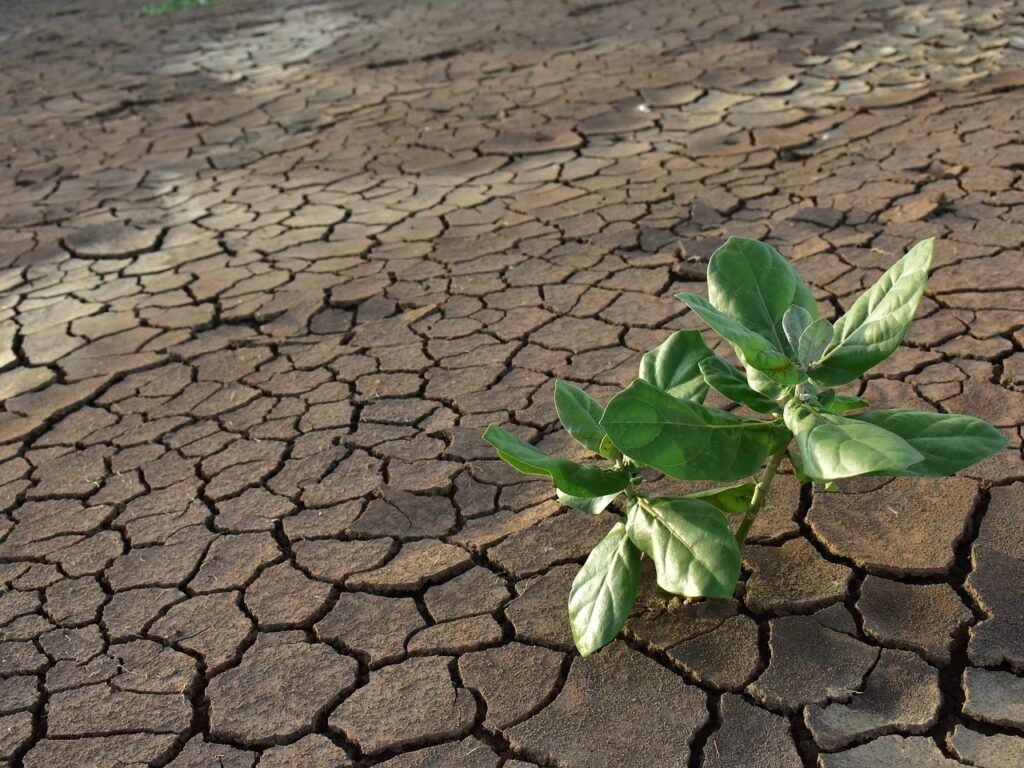
Purely under the natural circumstances we see happening today, it would have taken millions of years for earth’s surface to dewater and become sustainable for life. But what about with unnatural circumstances? With that, we may hypothesize that some unnatural mud dewatering mechanism occurred in pulses throughout the Flood, rather than a single dewatering event toward the end. This could explain partially hardened mud deposits like the Hermit Formation, and explain why dinosaurs and other animals were able to walk around and leave footprints during the Flood. It would also allow for relatively rapid dewatering of land surfaces by the time plant life started to regrow as the waters receded.
Even if the solution to the Mystery of the Flood Mudrocks does turn out to be of nonnatural origin, it still may be possible to model how this process took place. Excellent examples of showing how this might be done can be found in other submodels of the Flood. One good example is Dr. Russel Humphreys’ proposal for the removal of excess radiogenic heat during the Flood. Another example is Dr. Ken Coulson’s supernatural formative processes model for events that unfolded during Creation Week.17,18 But for the moment, at least, the solution to the Mystery of the Flood Mudrocks alludes us.
Conclusion
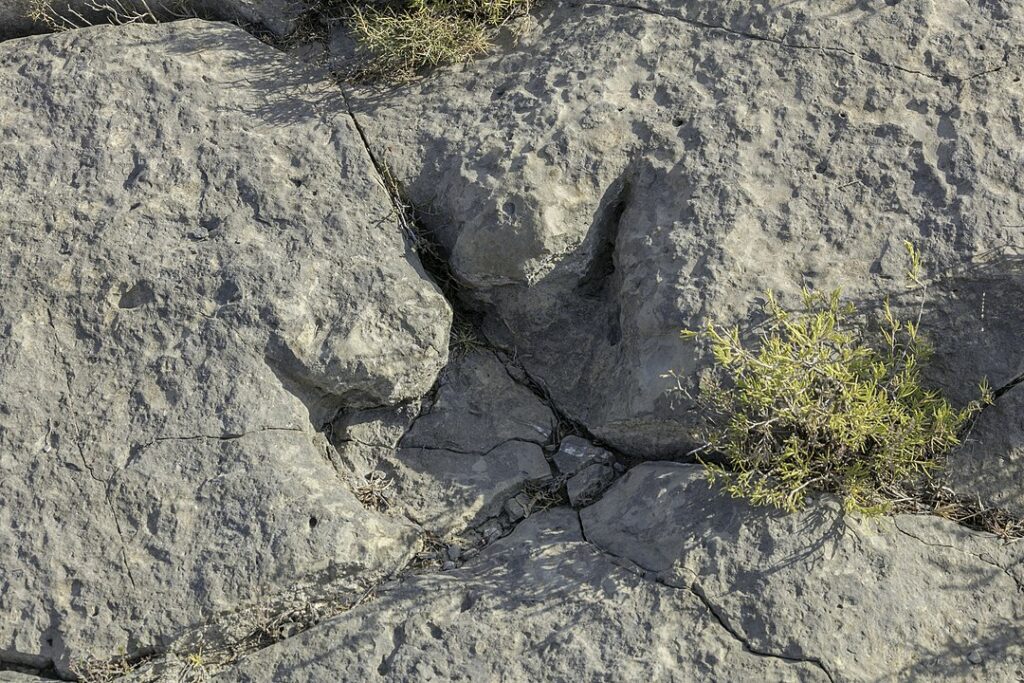
Unsolved mysteries are not unique to young-earth geology and are plentiful throughout the field of geology, and even science, as a whole. Unknowns should not scare or discourage us. As is the case with the Christian walk as a whole, the Christian, above all else, should be emboldened to march bravely into the unknown. After all, we do not rest idly in faith. With the true history of our world recorded in God’s Word, we can walk in faith matured by our experiences with God through hardships in our past. Boldly, we progress, finding observations, making new hypotheses, and testing them.
Unsolved mysteries are an exciting aspect of God’s created world. It will be amazing to see what God reveals to us about geologic processes of the past.
Footnotes
- kPa, or kilopascal, is a metric unit of pressure. 1 kPa is 1000x the unit of pressure and stress, using the metre-kilogram-second system. “Kilopascal (kPa) | Britannica” ↩︎
- Panagiotopoulou, O., Pataky, T. C., Day, M., Hensman, M. C., Hensman, S., Hutchinson, J. R., & Clemente, C. J. (2016). “Foot pressure distributions during walking in African elephants (Loxodonta africana).” Royal Society open science, 3(10), 160203. ↩︎
- The catchphrase of The Thing’s lesser known geologist cousin, The Rock. (Our editor is a nerd; please send help.) ↩︎
- Whitmore, J. H., & Strom, R. (2010). “Sand injectites at the base of the Coconino Sandstone, Grand Canyon, Arizona (USA).” Sedimentary Geology, 230(1-2), 46-59. ↩︎
- Winters, S.S. (1963). “Supai Formation (Permian) of eastern Arizona.” Geological Society of America Memoir, 89, 99 p. ↩︎
- Wise, Kurt (1986) “How Fast Do Rocks Form?,” Proceedings of the International Conference on Creationism: Vol. 1, Article 44. ↩︎
- Reclus, E. (1887). The Ocean, Atmosphere and Life: A Descriptive History of the Phenomena of the Life of the Globe. JS Virtue & Company, Limited, p. 534 ↩︎
- Fairbridge, R. W., & Teichert, C. (1948). “The low isles of the Great Barrier Reef: a new analysis.” The Geographical Journal, 111(1/3), 67-88. ↩︎
- Van Straaten, L. M. J. U. (1957). “Recent sandstones on the coasts of the Netherlands and of the Rhone delta.” Geol. Mijnbouw, 19, 196-213. ↩︎
- Puri, H. S., & Collier, A. (1967). “Role of micro-organisms in formation of limestones.” Gulf Coast Association of Geological Societies Transactions, Vol. 17 (1967), p. 355-367. ↩︎
- Scoffin, T. P. (1970). “A conglomeratic beachrock in Bimini, Bahamas.” Journal of Sedimentary Research, 40(2). ↩︎
- Fairbridge, R. W. (1964). “The importance of limestone and its Ca/Mg content to paleoclimatology.” Problems in palaeoclimatology, 431, 78. ↩︎
- Vousdoukas, M. I., Velegrakis, A. F., & Plomaritis, T. A. (2007). “Beachrock occurrence, characteristics, formation mechanisms and impacts.” Earth-Science Reviews, 85(1-2), 23-46. ↩︎
- Maithel, S.A. (2023). “The role of and limits on uniformitarian principles in creationist sedimentology research [abstract].” Proceedings of the Ninth International Conference on Creationism, p. 634. Cedarville, Ohio: Cedarville University International Conference on Creationism. ↩︎
- Wise, 1986, (Footnote 6). ↩︎
- This is acknowledged even by theologians and Bible scholars who do not accept a global Flood. For example, see Ramm, B., 1964, The Christian View of Science and Scripture, Exeter, U.K.: The Paternoster Press, p. 165. ↩︎
- Humphreys, D.R. (2018). “New mechanism for accelerated removal of excess radiogenic heat.” In Proceedings of the Eighth International Conference on Creationism, ed. J.H. Whitmore, pp. 731–739. Pittsburgh, Pennsylvania: Creation Science Fellowship. ↩︎
- Coulson, K.P. (2018). “Global deposits of in situ upper Cambrian microbialites—Implications for a cohesive model of origins.” In Proceedings of the Eighth International Conference on Creationism, ed. J.H. Whitmore, pp. 373–388. Pittsburgh, Pennsylvania: Creation Science Fellowship. ↩︎




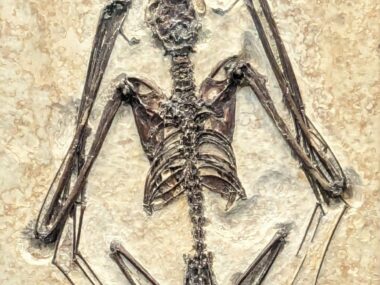




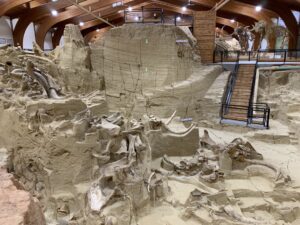


Good article Christian, and also quite complex for a non-geologist like me who is just a reader hehe.
After reading it, reflect on the footprints. It is also a problem for evolutionary actualism because if the footprints of dinosaurs, non-dinosaur reptiles, or the footprints of tetrapods were hundreds of millions of years old, they would have already been eroded, and the age of millions of years is not realistic either because how come In all that time, earthquakes, floods, rain and sand storms did not erase the traces?
It’s interesting when skeptics raise these types of objections to biblical geology, but it’s also a double-edged sword.
Footprints in the fossil record aren’t a problem for old age creationists and most young earth creationists acknowledge that footprints can be preserved in non global flood conditions given the observation that there are billions of footprints in post-flood rocks. There are even thousands of human footprints preserved in non Flood rocks. Yes, 99.999% of all footprints made by any organism will be destroyed but given that a population of dinosaurs could make trillions of footprints during their lifetime even if only 1 in every billion were preserved one would predict that there should be many footprints preserved for us in the fossil record.
I have read those articles that deal with the traces after the biblical flood, I am familiar with that.
But my point is that they are not consistent with a time scale of hundreds of millions of years for these reasons:
1. If geological change occurs slowly, surely the footprints made in the mud would be erased by wind and rain long before they were covered by new sediments and hardened into rock.
2. Traces have been found in deposits of carbonate rock similar to limestone, called dolomite. (as west of Jerusalem is the town of Beit Zeit)Dolomite is formed today only in small quantities and only in extreme environments where dinosaurs could not have lived, such as hot springs and desert salt pans. All other theoretical environments where dolomite could form are also not places where dinosaurs could live (such as hypersalty lakes and oceans with unusual chemistry).
3. Furthermore, even if dinosaurs somehow left footprints in soft dolomite mud on a shallow seafloor, how would the water-saturated sediment harden to fossilize the footprints? This can be done in only two ways: by exposing the sediment to air so that water evaporates from the mud, or by burying the mud so that the overlying sediments squeeze water out of the mud.
Firm and durable conglomerate cements are naturally occurring and basic to post-Flood (Pleistocene) submarine coral reefs. This, for me, premises natural (if catastrophic) Flood-aftermath processes capable of generating rock from water-borne sediments.
Beyond this, scientific formulations have been developed for sub-aqua / vadose engineering applications. For example, the Hoover Dam concrete ‘monolith’ was “fit for purpose” within five years of the completed pour–even though it will not be fully cured until ~2035.
The Flood proper featured exceptional (even singular and exclusive) processes, that were nonetheless physically “natural”; just as chemically identical species of ‘coal’, ‘opal’ and ‘diamond’ may be produced in the laboratory, it seems probable to me that simulation / replication of the unusual, yet “natural”, processes responsible for the effects produced by the Flood Event are within our apprehension.
Constant earthquakes should be considered which enhances the solidification of siltlayers. I found a study *) in which fine sand was used with a mean diameter of 200 micrometer. The solidification front under constant shaking of the test container moved up with speed of about 6 cm/s. To solidify a layer of 1000 m of fine sand needs only 1000/.06/3600 < 4 hours!!!! Silt is much finer and is much more hydrophylic. My prediction is that a silt layers of 1000 m can easily solidify in a matter of years under constant and repeated tremors. I theorise that there would have been enough earthquakes during the flood and in the periods of orogeneses in the aftermath of the flood, when the freshly hardened oceanic crust cooled down enough to start the process of massive serpentinization of the oceanic mantle peridotites. This chemical conversion causes an volume increase of 44 % of the mantle when completely serpentinized. That is enough to initiate plate tectonics and cause all the main orogenic belts on the continents.
*)https://www.nature.com/articles/s41467-023-41405-4
While earthquakes may speed up the consolidation process of sand and silt they have little or no impact on most clays. This is a widely tested phenomenon and the reason that cohesive soils are not considered to be liquefiable by engineers other than a few specific cases. It should also be noted that the rate of compaction is governed by the permeability which is typically of the order of 1 million times slower in clays than the sand tested in the paper cited in Nature. This is the essence of the problem setout in Dunn (2024).
Hi Dr Dunn, I’m recently graduated in engineering and would really like to read your paper (Dunn (2024), the one discussed in this post). Unfortunately the login page for the only place it is available (creation research) is broken and so I cannot get access. Would you be willing to email a PDF copy of the paper to me at [email protected] ? Many thanks!
Carel, there are 3 fairly simple problems with your suggestion here (I know I’m a bit late to the discussion, but oh well).
1. “Constant earthquakes,” even relatively minor ones, cause other disruptions that can be identified within geologic structures. Those simply are not found in any way that would support this hypothesis; not even on a local level, much less on a global scale.
2. Can you imagine the disruption that “constant earthquakes” would have posed for the humans trying to rebuild society after the Flood? Even with modern technology and building methods, earthquakes can cause massive damage. During post-flood years, with far more primitive methods, these earthquakes would have posed insurmountable odds to building cities (seriously – how would the Egyptians have been able to build such massive pyramids with constant earthquakes going on? How would indigenous peoples in South and Middle America have been able to build their massive mountainside terraces? And how long would these “constant earthquakes” have had to continue on a global scale, leaving no trace behind, to achieve the level of lithification necessary?
3. Earthquakes can also cause liquefaction of still-soft layers, essentially making them MORE permeable than they were, if they were in the early stages of lithification. Constant earthquakes would worsen the problem, not improve it. Isolated earthquakes can cause localized features, such as those noted in Christian’s article re: sand injections. But on a global scale? Simply not possible.
A few thoughts:
– If the mud deposits were covered with a layer of water, that could potentially allow dinosaurs to leave tracks in sediments that couldn’t actually support their body weight; before the dinosaurs can sink in too far, the buoyancy of their body might keep them afloat.
– Very interesting that the case study Dunn used involves rocks from the upper Miocene and above; if the Cenozoic really is post-Flood, then any processes affecting these sediments would be happening centuries AFTER the Flood had ended.
– Wouldn’t this be a problem for old-earth geologists as well? If even the 9 million year scenario can only turn the bottom 400 meters into rock, how does this mesh with MOST of the 3500 meter section being siltstone/claystone?
Tough for an engineer to address your thoughts w/o being able to read Dunn’s paper, you know?
The paper is unfortunately not open access yet. However, you can see the abstract here. Alternatively, if you become a member of the Creation Research Society, you can access the full paper that way.
I tried signing up for an account on that page, and the sign up page is broken, so I can’t even read it if I became a member.
Christian, I’m coming to your blog post a bit late, but hopefully I can still add something of value. I want to add another problem on top of the one posed by Scott Dunn, which I’d like to call The Food Problem. Highly original, I know, right? [Insert shrugging shoulders emoji] Please know that I’m writing this out of a sincere desire to understand your position, not to be mean.
Even when I was a Christian (through my late 20s, which is not 25+ years ago), I was never a YECer. One of the problems I saw, which I have never ever seen addressed by anyone, not even really in the atheist/skeptic community, is this: what would all the animals and people have eaten as they spread across the planet?
According to YECers, there would have been absolutely NOTHING left alive on the surface of the planet post-flood. Not a single blade of grass, bush, tree, corn, wheat…NOTHING. Taking into account Scott’s work, which you’ve covered quite well here, nothing COULD grow on the planet. Every animal and human would have stepped off the Ark into a dystopian nightmare of mud as far as the eye could see, that makes any modern movie look tame in comparison. Yet they would have had to eat.
But let’s discard Scott’s excellent work for the moment and posit that the earth somehow, miraculously, had arable land for vegetation to grow. How fast would vegetation have to grow, everywhere on the planet, to support spreading wildlife and humans, as they not only spread, but changed to become the millions of species identified today (also in such large numbers that enough would die and become post-flood fossils)?
In short, you can’t try to isolate the Mudrocks Mystery and solve it. You have to solve the Heat Problem, the Mud Problem, the Vegetation Problem, the Wildlife Dispersal Without Leave Any Traces Problem, the Speciation AND Fossils Problem, the Language Problem, the Ice Age Problem….ALL IN ONE COHESIVE MODEL. Creationists can’t solve a single one of these without resorting to, “but God did something supernatural,”, much less all of them.
I look forward to your response.
Thank you, Christian, for your work. I appreciate everything you do. As I was reviewing your blog, I figured out a couple of things. I don’t know the answer to everything, but I live in the Connecticut River Valley, and there are plenty of spots with thousands of different footprints. I’ve visited many of them, and there’s something I’ve noticed. It looks like dinosaur footprints are closely associated with flood basalt. Although they are in mud, you will not find them hundreds of feet up in mud layers; you will find them close to the basalt, within feet or maybe a maximum of 10 meters. If you look at the footprints, the preservation and details—such as skin impressions and minute details—show that it would be impossible if they were in mud drying for long time or if they would be rapidly buried it would distort detail. I believe the lithification of those rock layers over the basalt layers was really rapid due to certain processes that we can recreate easily in controlled environment. But you are right.We still have a lot of work ahead of us.